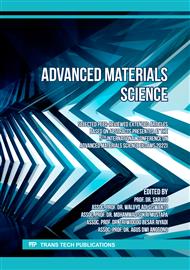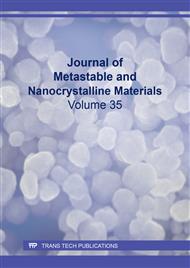p.1
p.11
p.19
p.25
p.33
Preliminary Study of Modified Fluorescent Silica Nanoparticles for the Detection of IgY Antibody
Abstract:
Biosensors must display high sensitivity and selectivity with fast response and be cost-effective. Silica nanoparticles are profoundly promising as versatile signal platforms opening up new possibilities for bioassays and dynamic units in biosensing systems. Fluorescent silica nanoparticles (FSNP) may be a key nanomaterial for labeling antibodies or antigens for biosensor application. Integration FSNP with functional molecules utilizing different surface modification techniques can bring out great improvements such as selective recognition, sensitive detection, and signal amplification because FSNP can bind with a large number of dye molecules within a silica matrix. The FSNP conjugated with anti-IgY can be applied for the detection of IgY antibody. FSNP was fabricated using the sol-gel method with hydrosilylation techniques for silica surface modification. N-H of amide groups from FSNP-anti-IgY ware observed in the FTIR spectra at 1648 cm-1 indicating that the conjugation was successful. The fluorescence intensity of FSNP-anti-IgY after detection of IgY was applied for immunodetection and measured using fluorescence spectroscopy. The intensity of FSNP-anti-IgY was 156.82, 368.31, and 648.00 a.u for the 0.05, 0.1, 0.5 µg/ml of the sample concentrations, respectively. The results showed that the modified FSNP-anti-IgY may be used for the fluorescence detection of antibodies.
Info:
Periodical:
Pages:
19-24
Citation:
Online since:
February 2023
Keywords:
Price:
Сopyright:
© 2023 Trans Tech Publications Ltd. All Rights Reserved
Share:
Citation:



